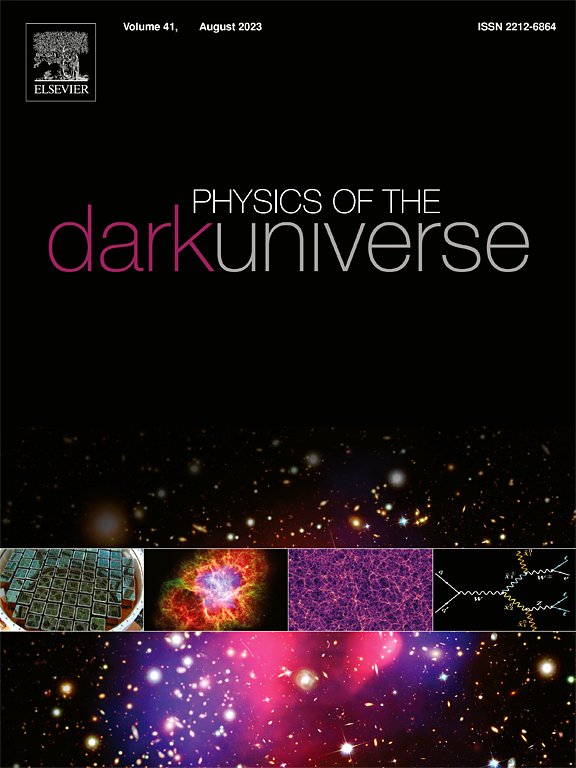From matter density to deflection angle and gravitational lensing using a perturbative method
IF 6.4
2区 物理与天体物理
Q1 ASTRONOMY & ASTROPHYSICS
引用次数: 0
Abstract
In this work, we develop a perturbative method to compute the deflection angles of null or timelike signals in spacetimes filled with a static and spherically symmetric (SSS) perfect fluid with fairly arbitrary density distributions. After solving the Tolman–Oppenheimer–Volkoff equations, the metric functions of the spacetime are obtained either as asymptotic series or as expansions around a finite boundary. The deflection angles of null or timelike signals in the weak-field limit in such spacetimes can then be expressed as series expansions in terms of the impact parameter, with coefficients determined by the metric expansions and, in turn, by the density distribution function. Gravitational lensing equations are also solved perturbatively to derive the apparent angles of the lensed images. Comparing our perturbative formulas with numerical results demonstrates the validity and efficiency of our method and results. This procedure establishes a direct connection between the mass density, the deflection angles, and the apparent angles of gravitationally lensed images. We apply these methods and results to the generalized Navarro–Frenk–White model and some other density profiles to analyze the influence of the density parameters.
用微扰方法从物质密度到偏转角和引力透镜
在这项工作中,我们开发了一种微扰方法来计算零或类时信号在充满具有相当任意密度分布的静态和球对称(SSS)完美流体的时空中的偏转角。在求解了Tolman-Oppenheimer-Volkoff方程后,得到了时空度量函数的渐近级数或有限边界附近的展开式。在这样的时空中,零信号或类时信号在弱场极限中的偏转角可以用冲击参数的级数展开来表示,其系数由度量展开决定,进而由密度分布函数决定。对引力透镜方程进行了微扰求解,得到了透镜像的视角。将微扰公式与数值结果进行比较,证明了方法和结果的有效性和有效性。这个程序建立了质量密度、偏转角和引力透镜图像视角之间的直接联系。我们将这些方法和结果应用于广义的navarro - frank - white模型和其他一些密度剖面,分析了密度参数的影响。
本文章由计算机程序翻译,如有差异,请以英文原文为准。
求助全文
约1分钟内获得全文
求助全文
来源期刊

Physics of the Dark Universe
ASTRONOMY & ASTROPHYSICS-
CiteScore
9.60
自引率
7.30%
发文量
118
审稿时长
61 days
期刊介绍:
Physics of the Dark Universe is an innovative online-only journal that offers rapid publication of peer-reviewed, original research articles considered of high scientific impact.
The journal is focused on the understanding of Dark Matter, Dark Energy, Early Universe, gravitational waves and neutrinos, covering all theoretical, experimental and phenomenological aspects.
 求助内容:
求助内容: 应助结果提醒方式:
应助结果提醒方式:


